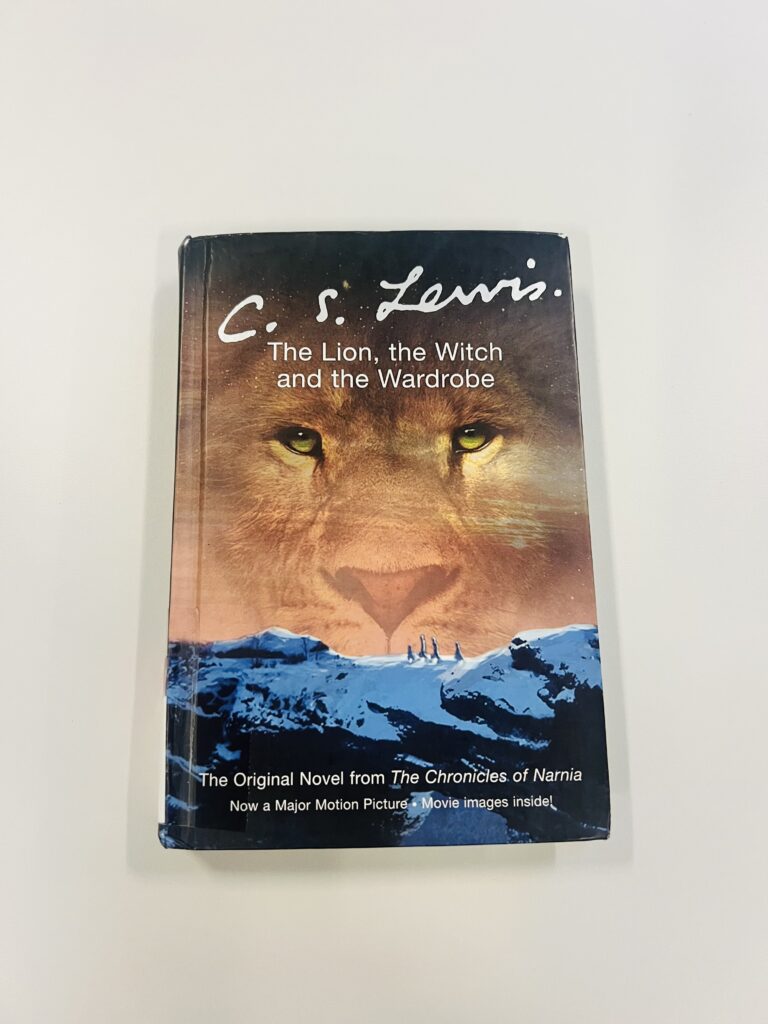
The Lion, the Witch, and the Wardrobe: A classic novel turned into a beloved film
Photo by Treasure Hardwick
Treasure Hardwick, Staff Writer
Most children and adults alike enjoy the “Chronicles of Narnia” series. The film allows readers to put their worries aside and get lost in a land full of mythical creatures and thrilling events.
The movie is based on C.S. Lewis’ classical novel “The Lion, the Witch, and the Wardrobe.” Lewis published his work in 1950, and readers immediately fell in love with the story. Today approximately 85 million copies of the novel have been sold with the number still increasing by the day.
The story focuses on four siblings who discover a wardrobe that leads to an enchanted world called Narnia, where an evil witch rules. The children set out to save Narnia and restore ownership to the rightful ruler, Aslan. Many battles occur between the forces of good and evil. Aslan sacrifices himself for one of the children, and then he comes back to life, proving that he has complete control and infinite power. The novel teaches that goodness always prevails in the end.
Once Lewis’ work gained popularity, it immediately caught the film industry’s eye. Shurajit Gopal, film professor at North Greenville University, commented on why the novel was turned into a movie.
“When a book gets popular, it immediately catches the film industry’s eyes because the producers know the movie will be a big hit. The producers hire screenwriters and the whole process begins,” Gopal said.
Not only did Gopal comment on the reason for producing the movie, but he also noted the excellent work in the film of the movie. He said that there is absolutely nothing that the filmmakers could have improved on to make the movie more entertaining.
He said, “’The Lion, the Witch, and the Wardrobe’ movie is a huge success. It is so skillfully produced and well-done in all aspects. As far as I can think of, there is nothing that the filmmakers missed or did not do well.”
Many people have used clips of the movie to teach a lesson in various establishments such as church or school.
Gopal discussed how more than just the film of the movie has impacted him.
“I have been to many churches where they played the scene of Aslan resurrecting. The movie teaches the gospel, and videos can be played in a church to show people an example of Christ’s resurrection,” said Gopal.
So, “The Lion, the Witch, and the Wardrobe” film has had a lasting impact on viewers, but what about the novel? How has Lewis’ book made a mark on the world and how does the novel differ from the movies?
Cecelia Sundell, a junior English major at NGU who loves reading classic novels, commented on the book and its many aspects. She believes that the story shows the importance of gospel literature and that readers can learn countless lessons from the novel.
“I think that the book is well-written, thoroughly composed, thoughtful work by C.S. Lewis. Lewis includes several important Christian symbols in his work that point directly to the gospel, which is a testament to his faith,” Sundell said.
Sundell loves the lessons that are taught in the novel and is passionate about its message.
“The story of ‘The Lion, the Witch, and The Wardrobe’ is the gospel. The book depicts the heavenly and earthly kingdoms of God,” she said.
Sundell expanded on the message of the gospel in the novel and discussed one of her favorite scenes and how it teaches biblical truth.
“In one of the biggest moments, Aslan, who represents Jesus, dies for the sins of Edmund, who represents humanity. Instead of Edmund having to pay for sins, Aslan does,” she said.
The film and novel are remarkably similar, but there are certain aspects that differ from another.
The narrative is more drawn out in the book compared to the movie because the movie takes out or adapts the storyline to better fit the screen.
For example, the film adds certain thrilling chases and battles that the book does not include. These differences are minor, however, and do not affect the quality and entertainment of the film and the novel.
